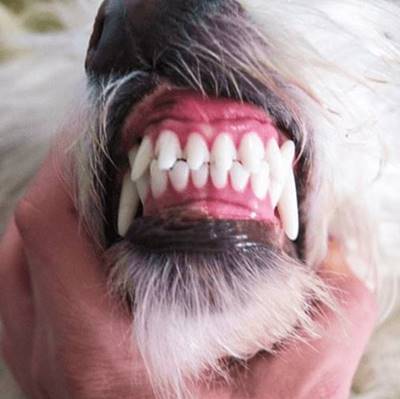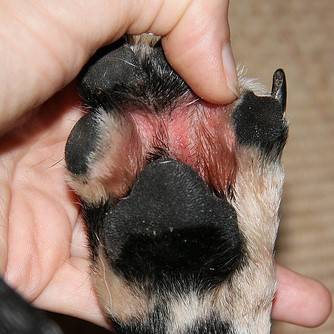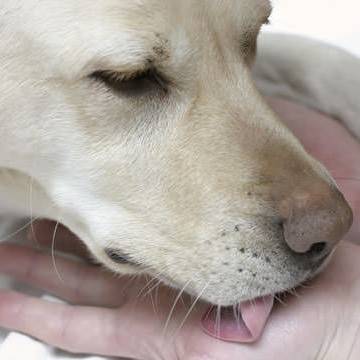10 Ways Your Dog is Telling He’s Not Feeling Well
by dogtoyadvisor | Last updated on November 18, 2020
We only review products we tested ourselves. We have affiliate partnerships, so we get a share of the revenue from your purchase.

Whenever our dogs are ill or in pain, it completely turns our World upside down!
Also, the fact that dogs often hide the pain or take some time to manifest serious illness makes it even worse because it takes some time for us to notice it.
There can be a number of reasons why dogs are in pain, some without much consequence but others that are much more serious, with deadly consequences.
Why Dogs Often Hide Their Pain
This is basically a survival instinct.
In the wild, showing pain means weakness and exposing themselves to be preyed upon by predators or other dogs.
Dogs that come from a domesticated lineage will be more than happy to let you know they’re in pain whereas dogs with ancestors that lived in the wild tend to hide it.
Then, you have dogs that are just too rambunctious to even notice they’re in pain or letting that stop them, making it harder to notice.
Some dogs will get bruised, hurt, sick and only let it show when it’s really hurting them. So you really need to pay attention.
Why It’s Important To Detect Your Dog Is In Pain
The obvious answer would be: to make it stop.
However, it can be more complicated than that because, like humans, dogs experiencing pain can mean life threatening conditions.
And those conditions will only get worse during the time it will take you to notice that your dog is experiencing pain.
Often for serious illnesses, this means you’ll only notice your dog is in pain when it’s too late to do something about it.
What To Do If Your Dog Is In Pain
If you are able to tell your dog is in pain, you need to act immediately.
If you’re able to identify the source of the pain and it’s easily resolved, like a small wound, something stuck in his paw, etc, it’s easy enough to solve.
However, if it’s something more serious or that you can’t identify the source, you need to take your dog to the vet and get it properly checked out.
Never medicate your dog without approval from your vet.
Don’t try to make it better if you don’t feel absolute confidence you can solve it, because you just might make it worse.
If what’s bothering your dog is something you’re already aware of and don’t want to give him medication filled with chemicals, you can try using hemp oil as a natural pain relief.
Hemp Oil is known for it’s relaxing properties, perfect for pain and anxiety.
Easy to give to your dog, the results we’ve seen are amazing.
10 Warning Signs of Pain in Dogs
Well, let’s get to it. Here you’ll find 10 ways you can tell your dog is experiencing pain, or at least, discomfort.
This will make it easier to identify an issue before it gets out of hand.
1 – Anti-social Or Aggressive Behavior
We all know our dogs and their personalities, so it’s pretty easy to tell if they’re acting differently.
When it’s full on aggressive behavior on a usually calm dog, it’s a clear sign something is going on.
Dogs will also hide and avoid contact with others when they’re in pain.
2 – Changes in Eating, Drinking and Sleeping Habits
This is a dead giveaway.
If your dog is sleeping much more than usual, not showing much appetite or thirst, you need to find out what’s going on.
On the other hand, if your dog is drinking water more often than usual (easy to tell by the state of his water bowl) it may be worth having a look at because it can mean illness like diabetes.
3 – Being More Vocal
Dogs in pain will yelp, growl, snarl and howl more than usual.
Even the ones that hide their pain will eventually begin to vocalize it, when it becomes too much.
It particularly easy to tell if he does it when you touch a certain part of his body or when he gets into a specific position.
4 – Excessive Grooming
If you notice your dog is constantly licking his paws, odds are he’s trying to soothe himself.
Also, dogs will lick their wounds and even sometimes bite them.
They lick the spots that hurt because they’re trying to clean it and make the pain go away.
5 – Heavy Panting or Altered Breathing
If your dog hasn’t exercised and is panting or showing altered breathing, he’s probably in pain.
Shallow breathing can also mean they’re feeling pain and can’t take deeper breaths.
6 – Mobility Issues
Limping, weakness and stiffness are the more obvious signs.
If your dog is refusing to run, go up the stairs or even get up, something is wrong.
One of the most common pain for dogs, particularly when they reach a certain age, is hip and joint pain.
Hip and joint pain can seriously restrict your dog’s mobility and there isn’t much you can do about it outside medication.
If you hate the thought of having to give your dog chemicals for the rest of his life, know that there is an alternative.
After much research we found a natural hip and joint pain relief supplement our dogs react very well too.
The relief is almost immediate and they seem to like the flavor, what more can we ask?
7 – Agitation
You can tell your dog is in pain if he’s looking unusually agitated.
He can be pacing back and forth, trying to lie down only to get back up, constantly changing positions in the bed or not sleeping at all.
8 – Changes in Their Bodies And Posture
Changes in his body are clear warning signs. Like swelling, bumps or anything different in his body than what it used to be.
Posture-wise, you’ll notice he’s more rigid or humping.
Another tell-tale sign is when they’re spending an abnormal amount of time on the prayer position (front legs on the ground and bottom in the air).
This allows them to stretch and relieve abdominal pain.
9 – Shaking or Trembling
Shaking or trembling can mean much more than cold or old age.
If your dog is shaking or trembling or doing it in specific positions, it means he’s in pain.
Muscle tremors more specifically can be a sign of poisoning, for example.
10 – Changes in His Eyes
Your dog’s eyes can tell you he’s in pain.
He’ll squint more often, you can notice redness or cloudiness.
Dilated pupils or discharge are also big signs something is wrong with your dog.
Affiliate links / Images from Amazon Product Advertising and iStock
Recommending Reading:











Good stuff to know about and cool things think my Boxer might have been bit by a spider or have ring worn on his wrist any home remanded?
Hi Michael.
Honestly, if you’re not sure which one could be, the best thing to do is to take him to the vet.
Only because spider bites are painful and can easily get infected and cause a larger problem.
Good luck! Let us know how it went.
Sandy